16.11.2020
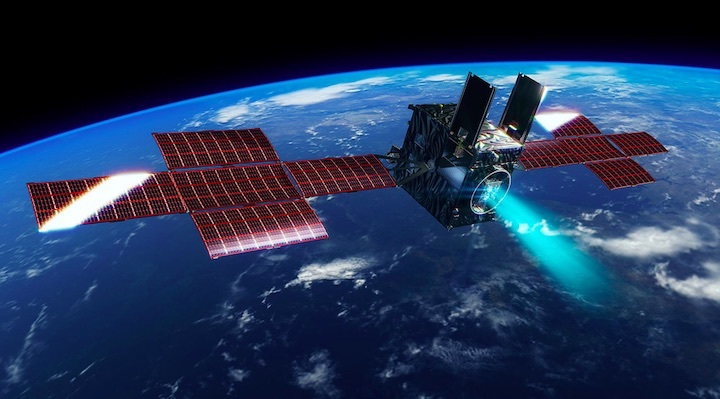
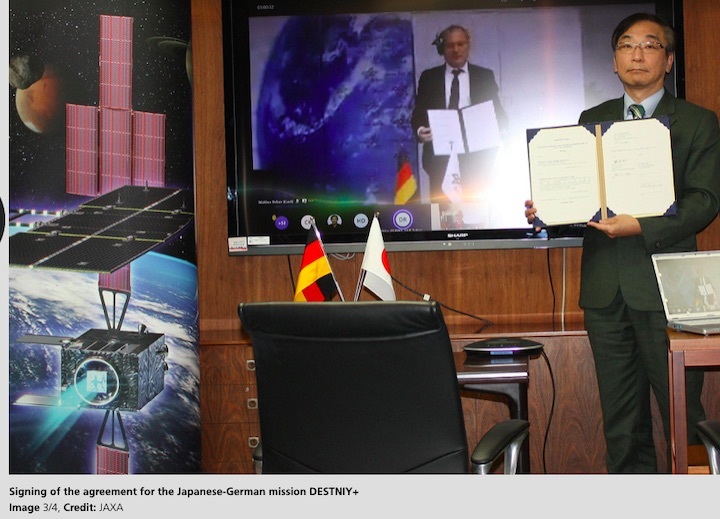
- In 2024, the Japanese-German space mission DESTINY+ will launch on a journey to asteroid 3200 Phaethon.
- The mission’s key instrument is the German DESTINY+ Dust Analyzer (DDA), which will collect and analyse cosmic dust samples during the entire flight of the spacecraft.
- The cooperation agreement for the bilateral mission was signed by DLR and JAXA on 11 November 2020 as part of a joint strategy dialogue meeting.
- Focus: Space
How did life arrive on Earth? To investigate this and to address fundamental questions about the evolution of celestial bodies in our Solar System, the Japanese-German space mission DESTINY+ (Demonstration and Experiment of Space Technology for INterplanetary voYage with Phaethon fLyby and dUst Science), will launch in 2024 on a journey to asteroid 3200 Phaethon. The German DESTINY+ Dust Analyzer (DDA) instrument on board the Japanese spacecraft will examine cosmic dust during the entire cruise phase to Phaethon, with dust particles that have escaped from the asteroid and are measured in its vicinity of particular interest to scientists. The cooperation agreement for the bilateral mission was signed on 11 November 2020 by Walther Pelzer, German Aerospace Center (Deutsches Zentrum für Luft- und Raumfahrt; DLR) Executive Board Member and Head of the DLR Space Administration, and Hitoshi Kuninaka, Vice President of the Japan Aerospace Exploration Agency (JAXA). The signing ceremony was part of the joint strategy dialogue meeting between DLR and JAXA.
Asteroid Phaethon
"This mission once again underlines the benefits of bilateral cooperation between equal partners, as is the case with Germany and Japan," explains Pelzer. "With DESTINY+, we are continuing our successful cooperation on missions such as Hayabusa2, Martian Moons eXploration (MMX) and BepiColombo, and we are pleased to be able to make an important contribution to space research with the DDA dust instrument." In mid-2024, the DESTINY+ spacecraft is scheduled to launch on an Epsilon S launch vehicle from the Uchinoura Space Center in Japan, beginning a four-year journey to asteroid 3200 Phaethon. This celestial body is thought to be the origin of a cloud of dust orbiting the Sun, which rains a shower of meteors – referred to as the Geminids – onto Earth every December.
"With a minimum approach distance of approximately 21 million kilometres, Phaethon gets closer to the Sun than the planet Mercury," explains Carsten Henselowsky, DESTINY+ Project Manager at the DLR Space Administration. "In the process, its surface heats up to a temperature of over 700 degrees Celsius, causing the celestial body to release more dust particles. The aim of the DESTINY+ mission is to investigate such cosmic dust particles and to determine whether the arrival of extraterrestrial dust particles on Earth may have played a role in the creation of life on our planet." During its flyby the spacecraft will approach the asteroid down to a distance of approximately 500 kilometres, at which point the asteroid itself will be approximately 150 million kilometres from the Sun.
German dust instrument DDA is key instrument for the mission
The mission's key instrument is the German DDA dust instrument. This high-resolution mass spectrometer will collect and analyse cosmic dust particles in the vicinity of Phaethon upon flyby and during its entire journey. The measurements will pin down the origin of each dust particle. Of particular interest is the proportion of organic matter; scientists suspect that organic compounds and the associated elements, such as carbon – the basic building block for all life forms on Earth – may have been delivered to our planet by such dust particles. A telescopic camera, TCAP, and a multiband camera, MCAP on board the spacecraft are going to observe the surface of the celestial body during the flyby.
JAXA is responsible for the development, construction and launch of the spacecraft and the subsequent operation of the mission. The German DDA instrument is being developed under the leadership of the Institute of Space Systems (IRS) at the University of Stuttgart in cooperation with the company von Hoerner & Sulger GmbH. DDA is supported by the DLR Space Administration with funds from the German Federal Ministry of Economic Affairs and Energy (Bundesministerium für Wirtschaft und Energie; BMWi).
Contract signed as part of the DLR-JAXA Strategy Dialogue meeting
The German-Japanese cooperation agreement for the DESTINY+ mission was signed during the recent DLR/JAXA Strategy Dialogue annual meeting, which was attended by Anke Kaysser-Pyzalla, Chair of the DLR Executive Board, Walther Pelzer, DLR Executive Board Member and Head of the DLR Space Administration, and Hansjörg Dittus, DLR Executive Board Member for Space Research and Technology. The online conference covered the entire spectrum of the now more than 60 joint collaborations with a view to stepping up the successful cooperation. In February 2016, DLR and JAXA signed a comprehensive joint strategy agreement in Tokyo.
The aim of both partners is to coordinate their aerospace programmes more closely and to combine their expertise. An important topic in this context is the exploration of the Solar System. For example, together with French partners, DLR developed the asteroid lander MASCOT, which landed on asteroid Ryugu in autumn 2018 as part of JAXA's Hayabusa2 mission. The landing of a JAXA capsule in Australia containing samples from Ryugu is expected on 6 December 2020. In the future, DLR and JAXA will work together on the MMX mission to explore the Martian moons, Phobos and Deimos. In addition, Germany and Japan make extensive use of the International Space Station (ISS) to address questions in the fields of medicine, materials development and basic research.
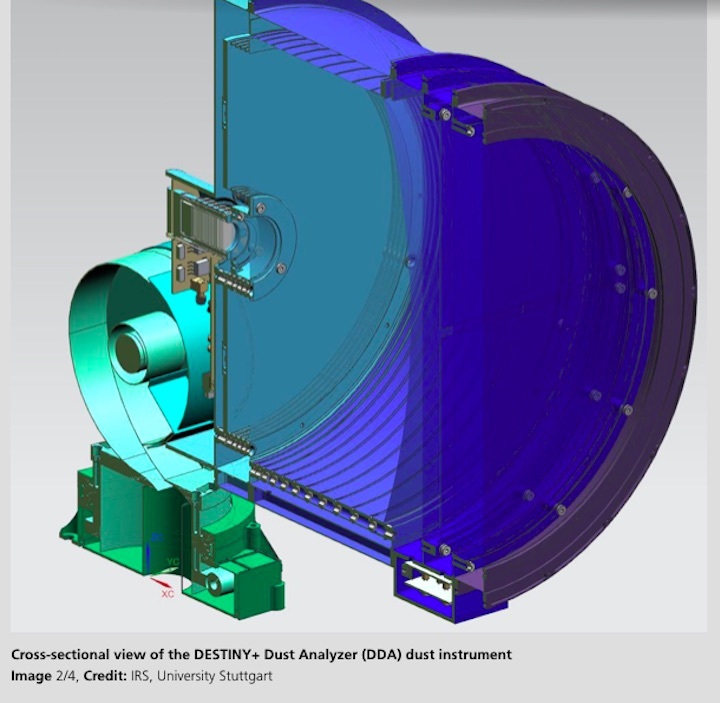
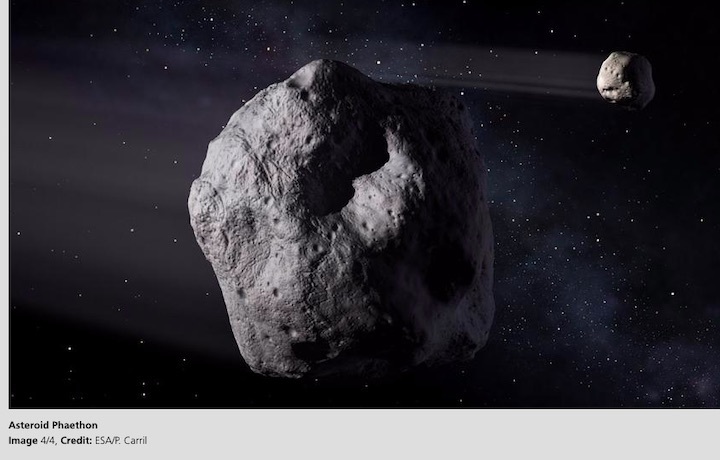
Quelle: DLR
----
Update: 22.11.2020
.
Germany joins JAXA’s low-cost deep space test mission
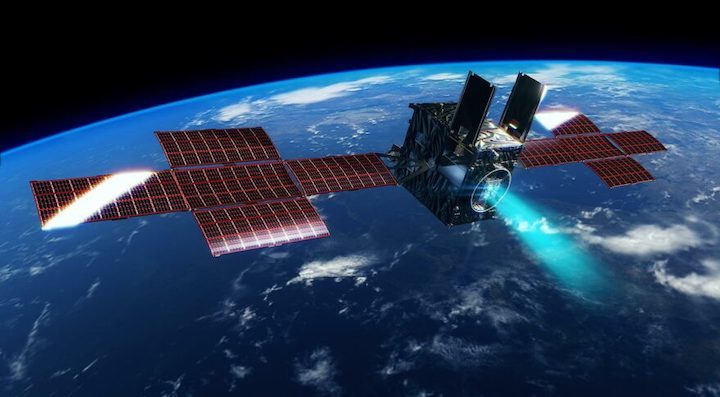
COLOGNE, Germany — The German Aerospace Center, DLR, has partnered with the Japan Aerospace Exploration Agency (JAXA) on a planned low-cost asteroid mission called Destiny+, expected to launch toward the asteroid 3200 Phaethon in 2024.
DLR will build the Destiny Dust Analyzer instrument, which will measure the properties of cosmic dust during the spacecraft’s four-year cruise and its flyby of the 5.8-kilometer asteroid.
The spacecraft will test innovative technologies that JAXA hopes to utilize in its future deep space exploration missions.
“The objective of this mission is to make deep space exploration accessible with a small launcher,” Carsten Henselowsky, Destiny+ project manager at DLR, told SpaceNews. “The mission will also test advanced trajectory planning routines that will probe new ways of reaching the desired orbit, new lightweight solar cells and electric propulsion.”
DLR, which signed the contract for the mission with JAXA on Nov. 11 during an online joint strategy dialogue meeting, will fund the development of the dust analyzer, which will be built by the Institute of Space Systems at the University of Stuttgart.
JAXA is responsible for funding the mission, including its launch aboard Japan’s Epsilon rocket.
Germany is the biggest contributor to the European Space Agency’s budget, but also has its own space program with international partnerships. During the online bilateral meeting, DLR and JAXA discussed more than 60 joint projects. The two have a comprehensive joint strategy agreement dating back to 2016.
Solar system exploration is a key theme of this cooperation, according to DLR. Together with the French space agency CNES, DLR built the MASCOT lander, part of JAXA’s Hayabusa2 mission, which touched down on asteroid Ryugu in October 2018. In the future, DLR and JAXA will work together on the Martian Moon Exploration mission (MMX), a medium-class mission set for launch in 2024, which will explore the Martian moons Phobos and Deimos.
The Destiny+ mission, previously expected to launch in 2022, will also carry two sets of cameras that will explore the surface of 3200 Phaethon during the 2026 flyby. A multispectral camera will image the asteroid at different wavelengths, while a telescoping camera with a rotating mirror will track the asteroid during the flyby.
“The two cameras will only make measurements during the few hours and days around the flyby,” said Henselowsky. “The Dust Analyzer, on the other hand, will start measuring the properties of the cosmic dust already a couple of months after launch and will remain operational throughout the four-year cruise.”
During its orbit around the sun, the asteroid 3200 Phaethon gets as close as 21 million kilometers to the star’s surface, within the orbit of Mercury. The asteroid is believed to be a source of the Geminids meteor showers, which hit the Earth every December. The approach of Destiny+ will, however, happen when the asteroid is 150 million kilometers away from the sun.
“During its flyby the spacecraft will approach the asteroid down to a distance of approximately 500 kilometers,” Henselowsky added. “The scientific aim of the mission is to investigate whether the cosmic dust particles released from the asteroid may have played a role in the creation of life on our planet.”
Quelle: SN

